It was a challenge, but our Ford Conservation Center helped the Wikel family preserve their grandfather’s 116-year-old oil landscape paintings.
Last year the staff of the Ford Center worked on two large murals. The murals presented a unique problem as they were oil paintings on paper rather than canvas. For this reason, they were treated in the paper lab by Hilary LeFevere, and technicians Vonnda Shaw and Megan Griffiths.
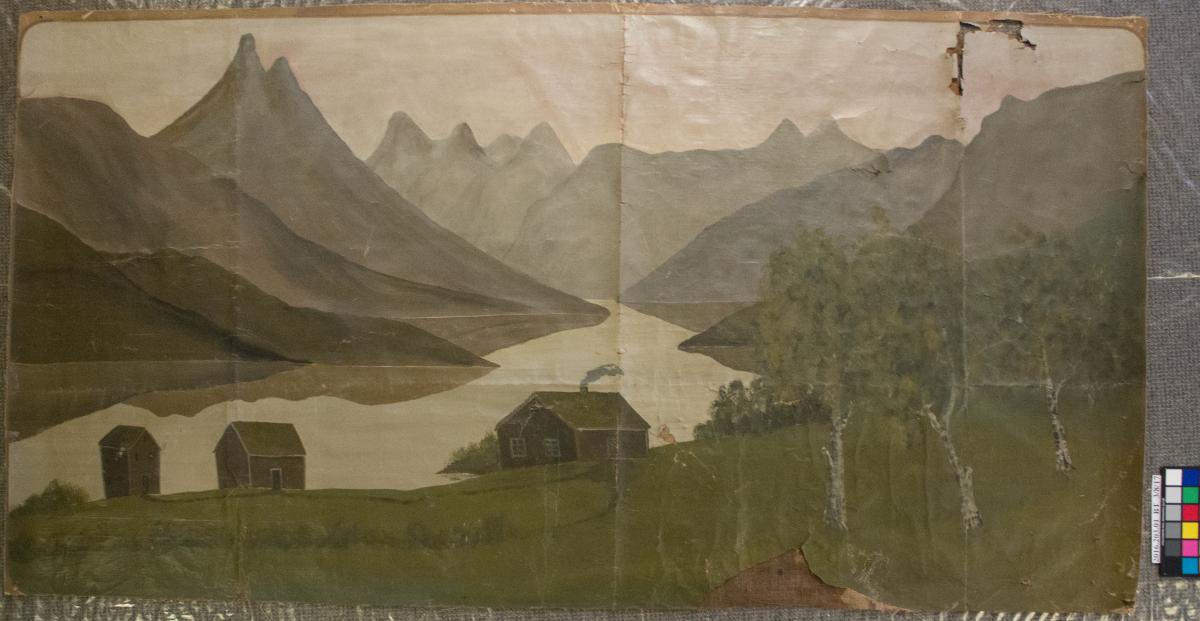
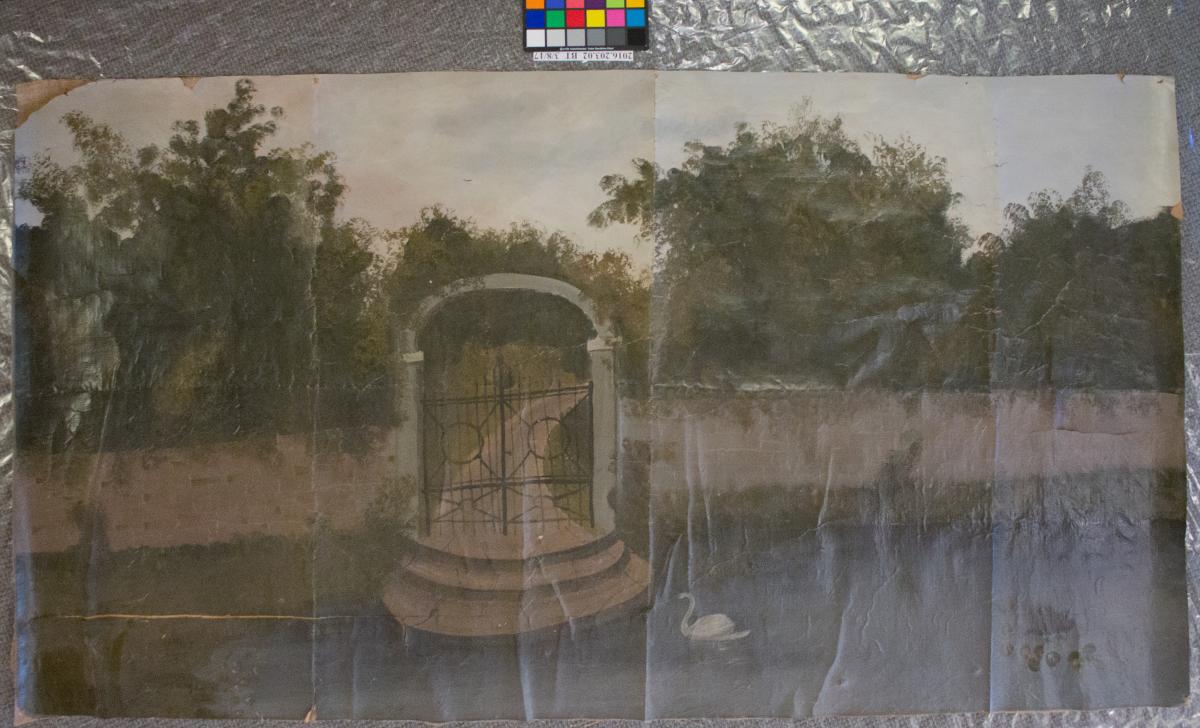
Landscape murals on paper before treatment.
The murals belonged to Patricia Wikel and her husband Rob Wikel. They had been painted in 1901 by Pat’s grandfather Theodore Bergersen in Lillehammer, Norway. Theodore was born 1863 and studied painting. He met and married Oleanna “Janna” Hagen. They eventually moved with their children to Lillemammer where Theodore Bergersen decorated homes, painted portraits and did traditional Norwegian decorative art known as rosemaling. He and Janna became charter members of the Losje Fremgang temperance lodge in Lillehammer. As a contribution to the lodge, Theodore produced eight large paintings depicting Scandinavian landscapes through the seasons. Each painting was about 5 feet x 9 feet, or about 1.5m x 2.75m and were hung in the lodge.
Theodore Bergersen died on July 27, 1902, at the age of 38, leaving his young widow with six children. The following year, Janna and the children emigrated to the United States. They settled in Fergus Falls, Minnesota where her father and sister lived, and the children grew up there.
Pat and Rob Wikel first visited Lillehammer in 1986. The caretaker of the Losje Fremgang lodge took them to see the paintings. All eight paintings were still in place, with four paintings hung on either side of the hall. The building changed ownership over the years and for a time the paintings stayed in place. But when the Wikel’s returned in 2016, they discovered that the building had been converted into apartments and the paintings had been removed some twelve years earlier. Six of the original paintings were subsequently lost.
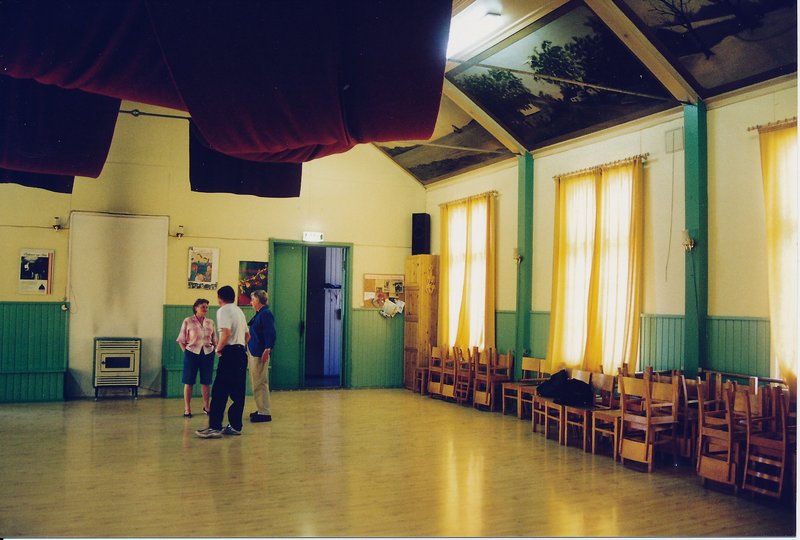
Inside the lodge showing how the murals were originally displayed.
When the new owner learned that the Pat was the granddaughter of the artist, he went to his farm to see if he could find any of the paintings. He was able to find two, which were nailed to the inside walls of his garage. The paintings were in poor condition from hanging in a garage for 12 years as well as the 100 years in the lodge. The new owner offered them to Pat to take back with her to the States.
The two murals that were recovered and brought to the Ford Center were oil paintings on paper, attached to burlap. The first mural depicts mountains and rolling hills with a river valley and a farmhouse. The second shows the edge of a lake or pond in front of a garden wall with an iron gate and a single swan. The murals were in poor condition. The paper substrate was brittle and discolored. There were fragmentary losses all over with larger losses at the edges. There were minor tears throughout and larger tears around the edges. The paper was delaminating from the burlap backing in many areas, and surface soiling and abrasions were present across the surface.
In order to treat the murals, loose media on the front was consolidated and tears along creases and around areas of paper loss were given temporary mends of Japanese tissue applied to the paint layer. These were required to provide structural support so the murals could be turned and manipulated without causing further damage. Once treatment was completed the mends were removed with deionized water.
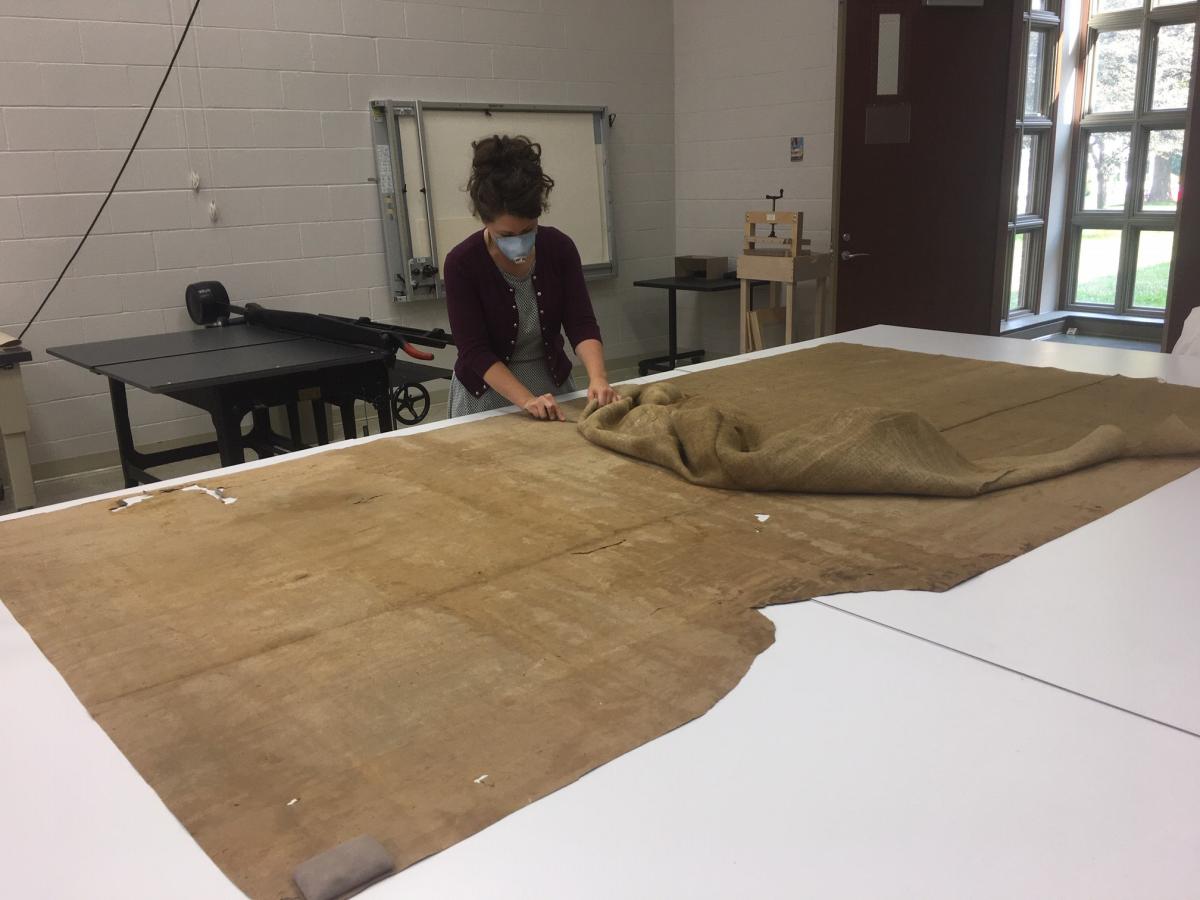
Paper Conservator Hilary LeFevere removes the burlap from the back of the mural.
Next, the burlap backings were mechanically removed from the murals using spatulas. Because most of the original adhesive had failed or was beginning to fail, the burlap was removed easily. The backs of the mural were vacuumed and surfaced cleaned with sponges to reduce and trap dust, soiling, insect casings, and mold spores. The paper substrates were swabbed with a mixture of ethanol and deionized water with the aim of preventing a future mold outbreak. Lastly, the backs were lightly sanded overall to reduce the old adhesive layer. The paintings were then wet cleaned using deionized water on small cotton swabs.
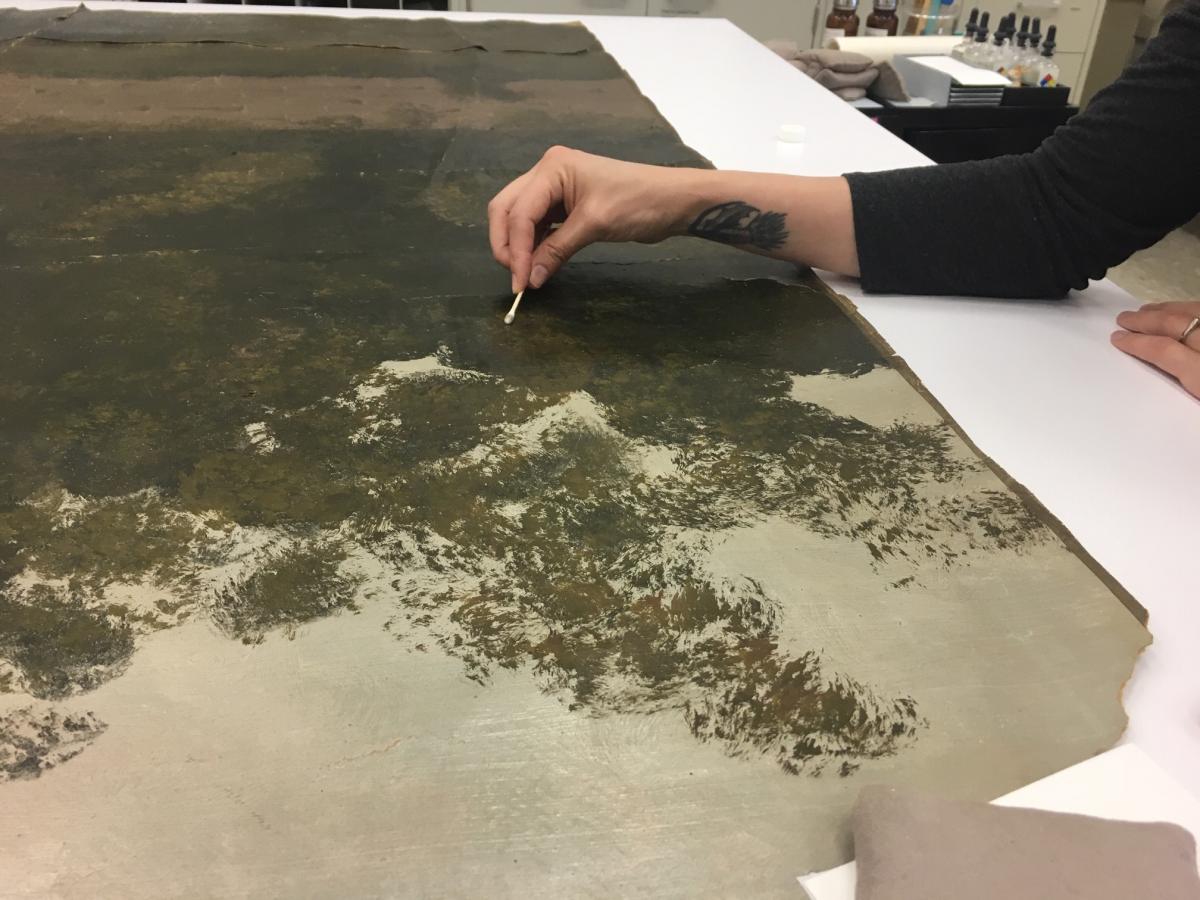
Surface Cleaning the mural with a cotton swab.
It was originally proposed that the murals were to be lined with an intermediate layer of Japanese paper and wheat starch paste. Due to the different expansion and contraction between the various layers of paper and thick oil paint, it was not possible to flatten the paintings without causing areas of distortions. This treatment step was unsuccessfully tested on one of the murals and required removal. This sometimes happens with unusual treatments and illustrates why conservators aim to make sure their treatments are reversible. Instead, the murals were adhered directly to a polyester canvas with a heat-set adhesive. This adhesive is stable, strong, and reversible with solvents should the canvas ever need to be removed from the murals. Once the murals were adhered to the canvas, creases and paper losses were inpainted with media to match the surrounding areas.
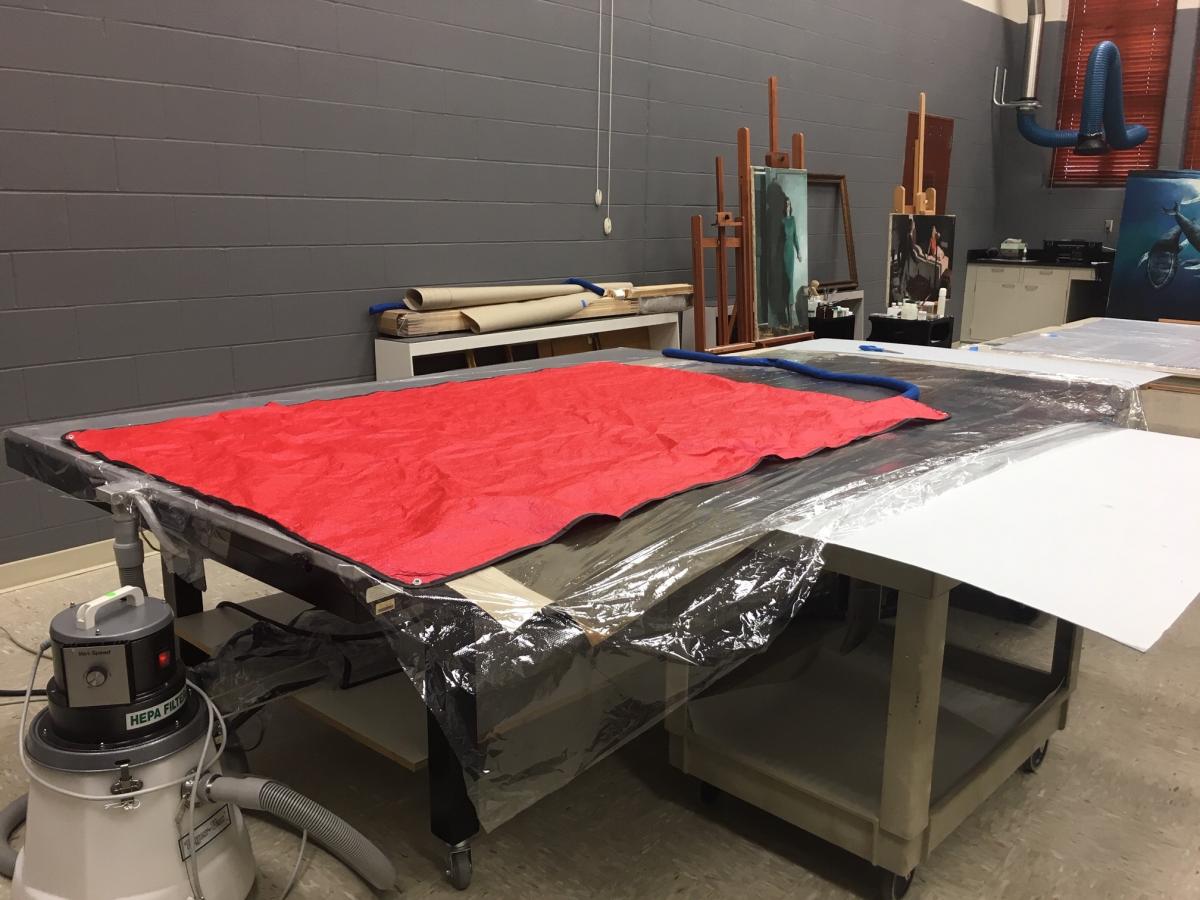
Lining mural onto canvas using hot table under suction.
After the treatment was completed, the Wikels searched for a permanent and meaningful place to donate the murals. Because of the family’s connection to Fergus Falls, MN, Pat began to look in the area. Her research eventually brought the murals to the PioneerCare Center, of Fergus Falls. One of Theodore’s daughters had been a resident of the facility until her passing, and two of her daughters (who worked in healthcare) eventually went on to live here as well. It seemed a fitting home for the murals.
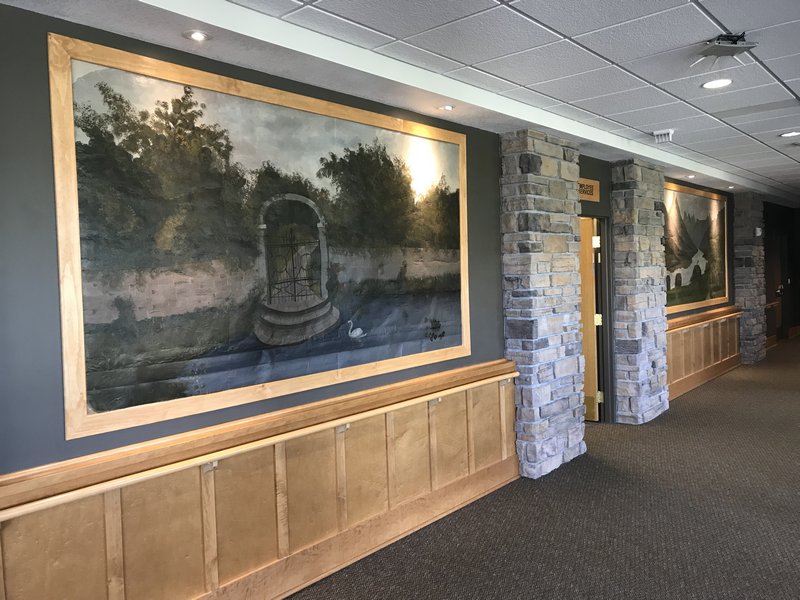
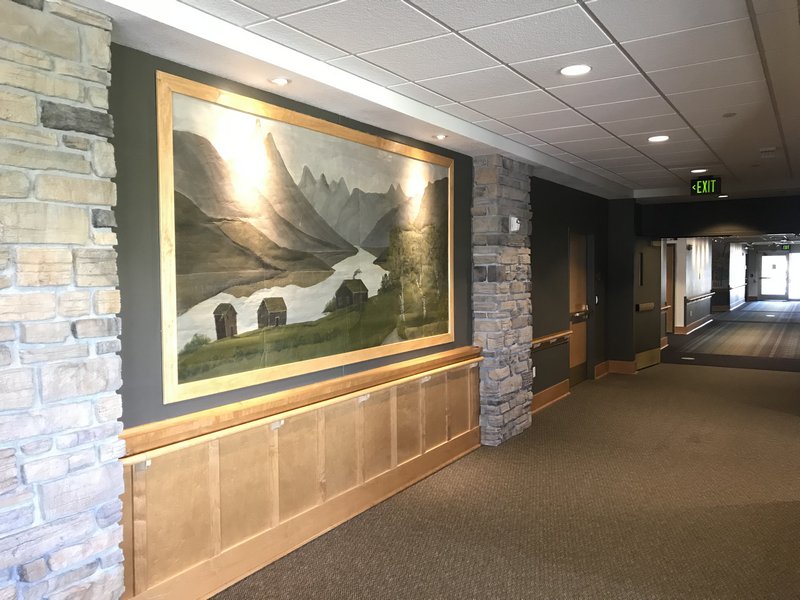
The murals installed at PioneerCare in Fergus Falls, Minnesota.
Pat knew that the historical links between Theodore Bergersen’s descendants and the city of Fergus Falls and PioneerCare were significant ones, and she says, “The fact that two of his works will now reside in the town where his widow eventually settled is so very appropriate, a fitting culmination to their long history.”
A special thank you to Pat and Rob Wikel for providing the photos and background information on the murals and granting us permission to use their work in this post.



